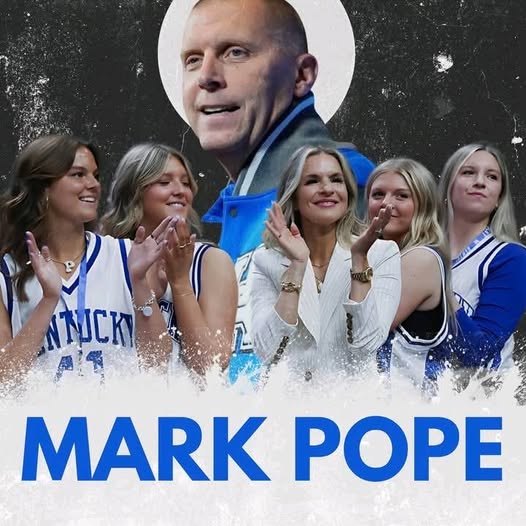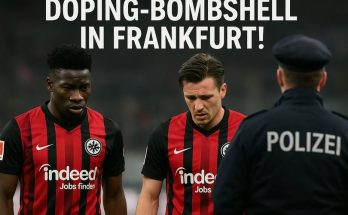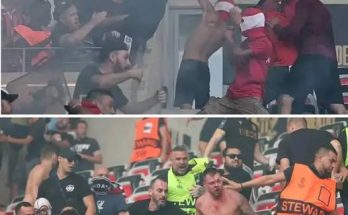When John Calipari walked off the Rupp Arena floor for the final time as Kentucky’s head coach, the mood in Lexington was a curious blend of relief and dread. After over a decade of Final Four runs, NBA Draft spectacles, and recruiting wizardry, the once-revered figure had become polarizing. Calipari had delivered a national title and defined an era, but his recent seasons had been marred by underachievement, early tournament exits, and a growing sense that the program’s best days might be behind it.
The Bluegrass State, with its sky-high expectations and storied hardwood history, doesn’t handle mediocrity well. And for many in Big Blue Nation, the last few seasons under Cal felt just that—mediocre. When news broke that Calipari had accepted a job elsewhere, it felt like a breakup that everyone saw coming but no one truly prepared for. Uncertainty gripped the fanbase. The brand was still powerful, the name “Kentucky” still carried weight, but there was no clear path forward. Who would want this job under this kind of pressure? Who could?
Enter Mark Pope.
A former Wildcat captain and NCAA champion in 1996, Pope wasn’t the most glamorous hire. He wasn’t a blue-blood coach with a national title pedigree. He wasn’t a media darling. He hadn’t spent years in the upper echelon of college basketball royalty. But what he lacked in headline appeal, he made up for with passion, purpose, and perspective. Mark Pope got Kentucky—not just the basketball, but the culture. The expectations. The heat. The hunger. And most importantly, he wanted it. Desperately.
What unfolded in the months and years following his hiring would be one of the most remarkable resurrections in the history of college basketball. Pope didn’t just steady the ship—he turned it into a battleship. He took a fractured roster, a skeptical fanbase, and the lingering shadow of Calipari’s legacy and molded it all into something entirely new yet deeply familiar. In Pope’s hands, Kentucky basketball rediscovered its soul.
His first task was stabilizing the roster. The transfer portal, once a tool wielded masterfully by Calipari in some years and ignored in others, became Pope’s playground. But he wasn’t just looking for five-star names. He looked for fit. He looked for heart. He looked for guys who wanted to be here, not just pass through on their way to the pros. His recruits—both high school and portal—weren’t always the top of the rankings, but they were tough, cohesive, and coachable. Pope valued team chemistry as much as talent, and it showed.
But it wasn’t just about who he brought in. It was how he coached them. Gone were the days of relying solely on isolation talent and one-on-one mismatches. Pope’s system was modern, free-flowing, and built on ball movement and floor spacing. Kentucky began playing with joy again. There was energy on both ends of the floor. And above all, there was belief.
The fans noticed it. Quickly. Rupp Arena, often subdued during Calipari’s final stretch, roared back to life. The student section was packed and passionate. The alumni started coming back. Practices were open, the community was welcomed in, and Pope became a constant presence—at football games, around campus, in the local media. He didn’t just coach Kentucky basketball. He lived it.
The early returns were better than anyone could have dreamed. Kentucky went from a program in flux to a Top 10 team in just one season. But it wasn’t a miracle—it was a masterpiece. Pope’s Wildcats defended with grit, ran the floor with purpose, and shared the ball like a family. No egos. No drama. Just winning.
What stood out most, perhaps, was how connected the team was. Pope’s fingerprints were on everything—from the culture to the in-game adjustments to the postgame messaging. He made the team about more than just banners and bragging rights. He made it about us. The program. The people. The tradition. He often spoke about the “Camelot” of Kentucky basketball—not as a mythic past to be idolized, but as a present reality to be built. And every game, every win, every practice moved the team closer.
Recruiting, once feared to be the Achilles’ heel of Pope’s tenure, quickly became a strength. His approach was refreshing to parents and players alike. He wasn’t selling a stopover to the NBA—he was selling a transformational experience. Come to Kentucky, he said, and become part of something bigger than yourself. He built relationships, not pipelines. He got kids to buy in, not cash out. He didn’t chase stars—he created them.
And when the victories started stacking up, so did the believers. Pope’s teams didn’t just win games—they beat good teams. They competed with fire. They didn’t back down from anyone. Big Blue Nation found itself daring to dream again, and not in the delusional, preseason-hype way. It was real. Tangible. Earned.
Behind the scenes, Pope reinvigorated the program’s infrastructure. He brought in elite assistants, invested in player development, and partnered with analytics minds to sharpen Kentucky’s strategic edge. Every detail mattered. He modernized the brand without compromising its tradition. He found a way to honor the past without being chained to it.
Pope even leaned into NIL in a way that fit Kentucky’s ethos. He advocated fiercely for his players but never let NIL define them. His message was clear: build your game, build your brand, and we’ll build it together. In an era where college basketball felt more and more transactional, Pope made it transformational.
There were setbacks, of course. A tough road loss here, a buzzer-beater there. But Pope’s response to adversity was another reason he was the right man for the job. He didn’t blame the players or the officials. He took ownership. He coached harder. He adjusted. He inspired. His teams never quit.
The culmination came in Year Two, when Kentucky returned to the Final Four for the first time in nearly a decade. It wasn’t just that they made it—it was how they made it. With a roster that wasn’t full of lottery picks but warriors. With a coach who out-schemed giants. With a team that didn’t just wear the Kentucky jersey but honored it.
And when the final buzzer sounded in that semifinal victory, when Big Blue Nation erupted in unified, cathartic joy, one thing was crystal clear: Mark Pope had done it. He hadn’t just brought Kentucky back. He’d elevated it.
From crisis to Camelot.
Gone was the tension of the Calipari era. Gone was the annual anxiety over NBA declarations, media drama, or underwhelming March performances. In its place was a program rooted in trust, joy, and relentless excellence.
Mark Pope didn’t try to be the next Calipari. He didn’t try to mimic Pitino or Rupp or Hall. He just tried to be himself. And in doing so, he gave Kentucky exactly what it needed—not a savior, but a steward. Not a rockstar, but a craftsman.
He brought back the blue-collar brilliance that had defined Kentucky basketball long before the days of one-and-done headlines. He built a team that dove for loose balls, set bone-crushing screens, and clapped for each other on the bench. He built a program, not a spectacle.
And now, with recruits lining up, wins piling up, and a fanbase reawakened, the question isn’t whether Kentucky is back. It’s how far they’ll go. The foundation is strong. The leadership is sound. The vision is clear.
Mark Pope didn’t walk into a perfect situation. He walked into a burning building. And somehow, some way, he rebuilt it into a castle.
From the ashes of doubt and disappointment, he forged a new era of hope and dominance. From crisis to Camelot, indeed.
And for Big Blue Nation, it feels like home again.



